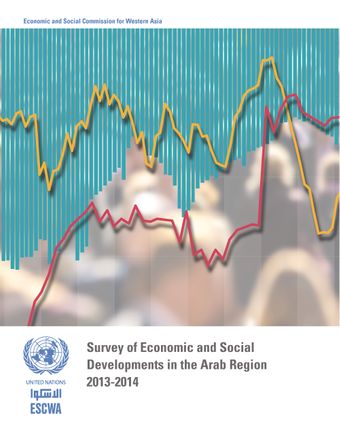Preface

- Author: United Nations
- Main Title: Survey of Economic and Social Developments in the Arab Region 2013-2014 , pp 3-4
- Publication Date: December 2014
- DOI: https://doi.org/10.18356/297b4302-en
- Language: English
- Previous Chapter
- Table of Contents
- Next Chapter
In the wake of the global financial crisis, Arab economies were praised for their resilience and mitigation against the adverse effects of the crisis, which were felt far less severely than in other regions. During 2008 and 2009, Arab policymakers managed to use macroeconomic tools to stabilize their economies and weather the global liquidity crunch. Yet despite this resilience, Arab economies continue to face structural rigidity that has left the region with low economic diversification, high unemployment, stagnated wage growth and persisting gender gaps. The severity of these issues has resulted in their incorporation in the development strategies of Arab countries, including discussions in a series of Arab Economic and Social Development Summit meetings in 2009, 2011 and 2013, producing policy measures to tackle these issues with regional leverages, such as the Arab Customs Union, which is set to be launched in 2015. Despite these policy efforts, the structural weaknesses of Arab economies have not improved visibly. Rather, continuing armed violence, political instability and social unrest in the region are threatening the strength of Arab economies and are marginalizing intraregional economic activities.
© United Nations
ISBN (PDF):
9789210570817
Book DOI:
https://doi.org/10.18356/bb58a8b1-en
Related Subject(s):
Economic and Social Development
Sustainable Development Goals:
-
From This Site
/content/books/9789210570817c001dcterms_title,dcterms_subject,pub_keyword-contentType:Journal -contentType:Contributor -contentType:Concept -contentType:Institution105
/content/books/9789210570817c001
dcterms_title,dcterms_subject,pub_keyword
-contentType:Journal -contentType:Contributor -contentType:Concept -contentType:Institution
10
5


